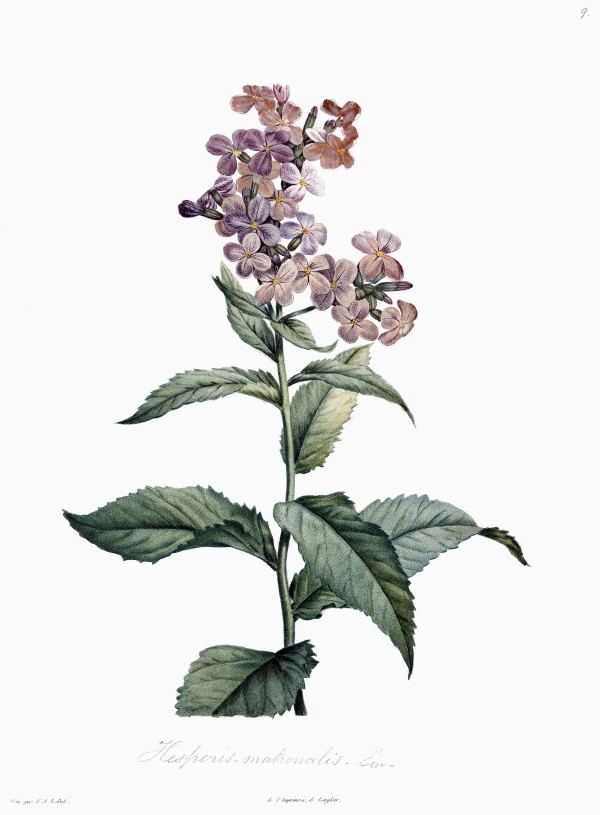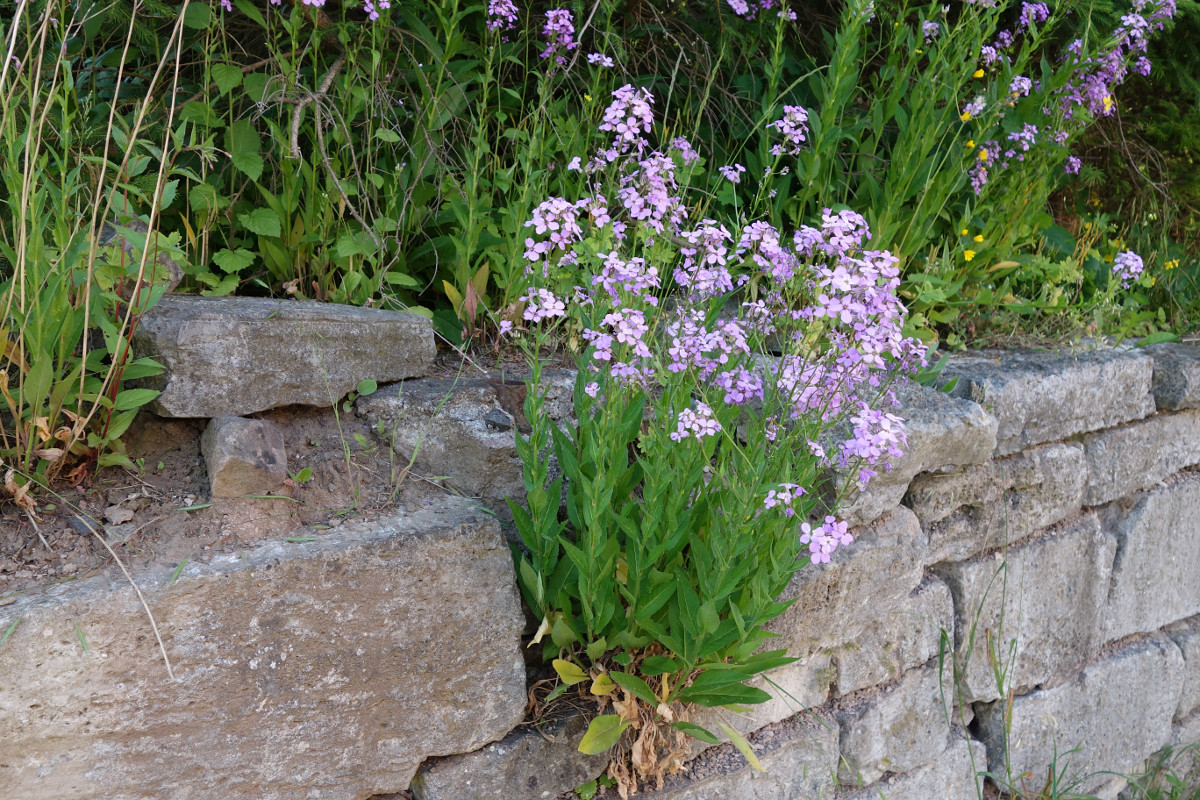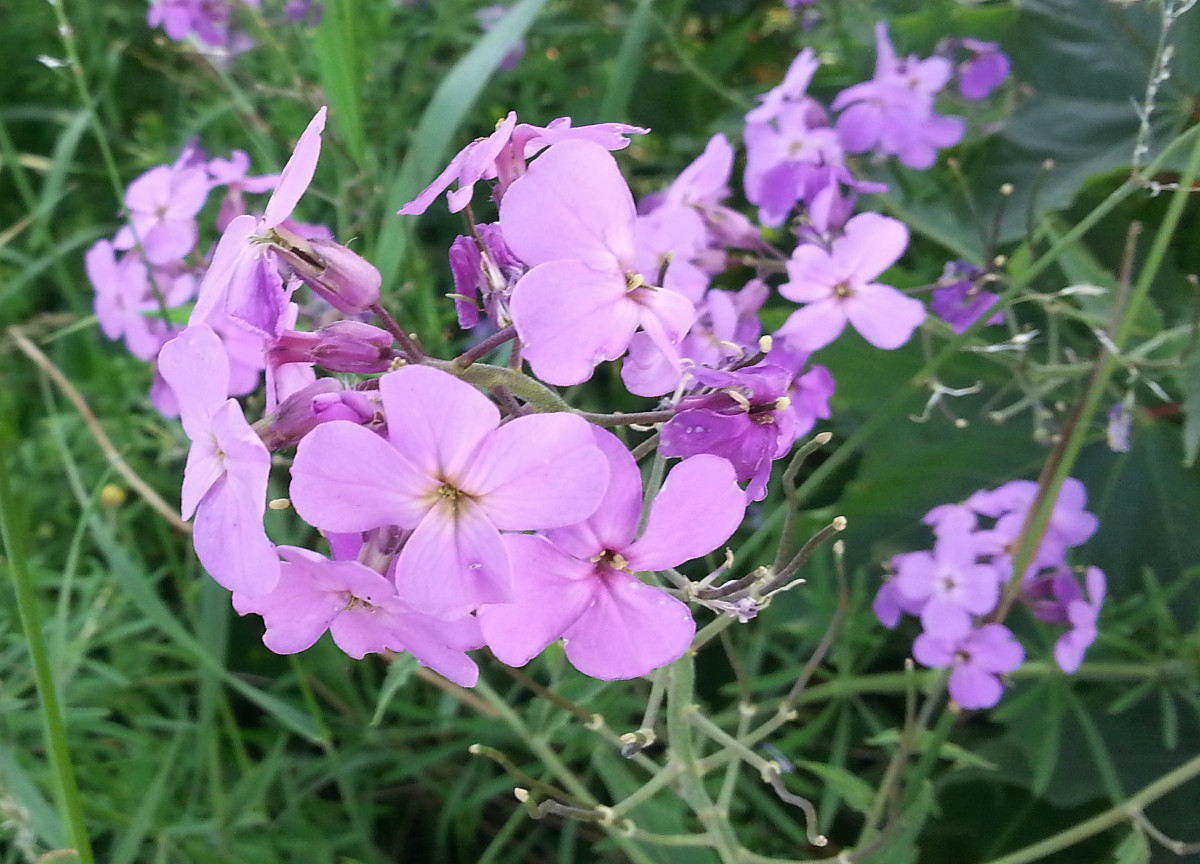Hesperis matronalis L. - Brassicaceae - dame’s rocket, sweet rocket, Damask violet, dame’s violet, Gewöhnliche Nachtviole
Biennial or perennial herb, up to 80cm tall; basal leaves withered by flowering, cauline leaves narrowly oblong, lanceolate, or broadly ovate; flowers deep purple, lavender, or white.
http://www.efloras.org/florataxon.aspx?flora_id=2&taxon_id=200009560
„…native to Eurasia and cultivated in many other areas of the world for their attractive, spring-blooming flowers… In Europe, it is host to the caterpillars of several butterfly species, including the Orange Tip Anthocharis cardamines, Large White Pieris brassicae, Small White Pieris rapae, and moths, such as Plutella porrectella.“
http://en.wikipedia.org/wiki/Hesperis_matronalis
„In the evening, the flowers develope a pleasant green-floral, clove-like oder. Accordingly, the following compounds were found in the odor concentrate: benzyl alcohol, 1,8-cineole, benzyl acetate, linalool, α-terpineol, cinnamic alcohol, eugenol, isoeugenol, isoeugenol methyl ether, and benzyl benzoate.
[Surburg et al., Volatile compounds from Flowers, in: Teranishi, R.;Buttery, R. G.;Sugisawa, H. Bioactive volatile compounds from plants. (Book) 1993, 182]
„Twelve monoterpenes and five aromatic compounds were identified from Hesperis matronalis flowers in situ. The most abundant compounds were 1,8-cineole, E-β-ocimene, linalool, and benzyl acetate. These four compounds were released asynchronously by the flowers during a photoperiod of 15 hr light and 9 hr darkness: 1,8-cineole was released mainly during the light period, E-β-ocimene mainly near the switch from light to darkness, and benzyl acetate mainly during the dark period. Linalool was not released rhythmically.“
[Nielsen, Jens K., et al. „Asynchronous rhythms in the emission of volatiles from Hesperis matronalis flowers.“ Phytochemistry 38.4 (1995): 847-851]
Floral rate emission measurements showed two main groups of scent components: Aromatics like benzaldehyde, benzyl acetate, benzyl alcohol, benzyl benzoate, as well as terpenoids like α-pinene, 1,8-cineole, E-β-ocimene, and linalool.
E-β-ocimene, linalool, and benzyl acetate dominated the scent by volume. Minor components like phenylacetaldehyde, eugenol, methyl anthranilate, linalool oxides and α-terpineol may be of olfactory importance.
[Flower color-flower scent associations in polymorphic Hesperis matronalis (Brassicaceae). Cassie J. Majetic, Robert A. Raguso, Stephen J. Tonsor, Tia-Lynn Ashman, Phytochemistry 68 (2007) 865-874] http://citeseerx.ist.psu.edu/viewdoc/download?doi=10.1.1.336.9780&rep=rep1&type=pdf
The seeds contain alkaloids, mainly hesperaline (choline ester of veratric acid), and smaller amounts of vanilylcholine, p-coumarocylcholine and 3,4-dimethoxycinnamoylcholine.
[The biology of Canadian weeds. 140. Hesperis matronalis L., Francis, A., Cavers, P.B., Warwick, S.I., Canadian Journal of Plant Science, 89(1), 2009, 191-206]

Hesperis matronalis L.; Rousseau, J.J., La botanique de J.J. Rousseau, t.9 (1805) [P.J. Redouté]
http://botanicalillustrations.org/species.php?id_species=509854

Hesperis matronalis, CC BY-SA 3.0, Author: Andreas Kraska

Hesperis matronalis flowers, CC BY-SA 3.0, Author: Andreas Kraska